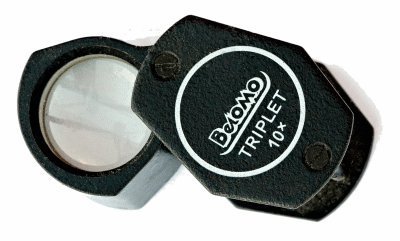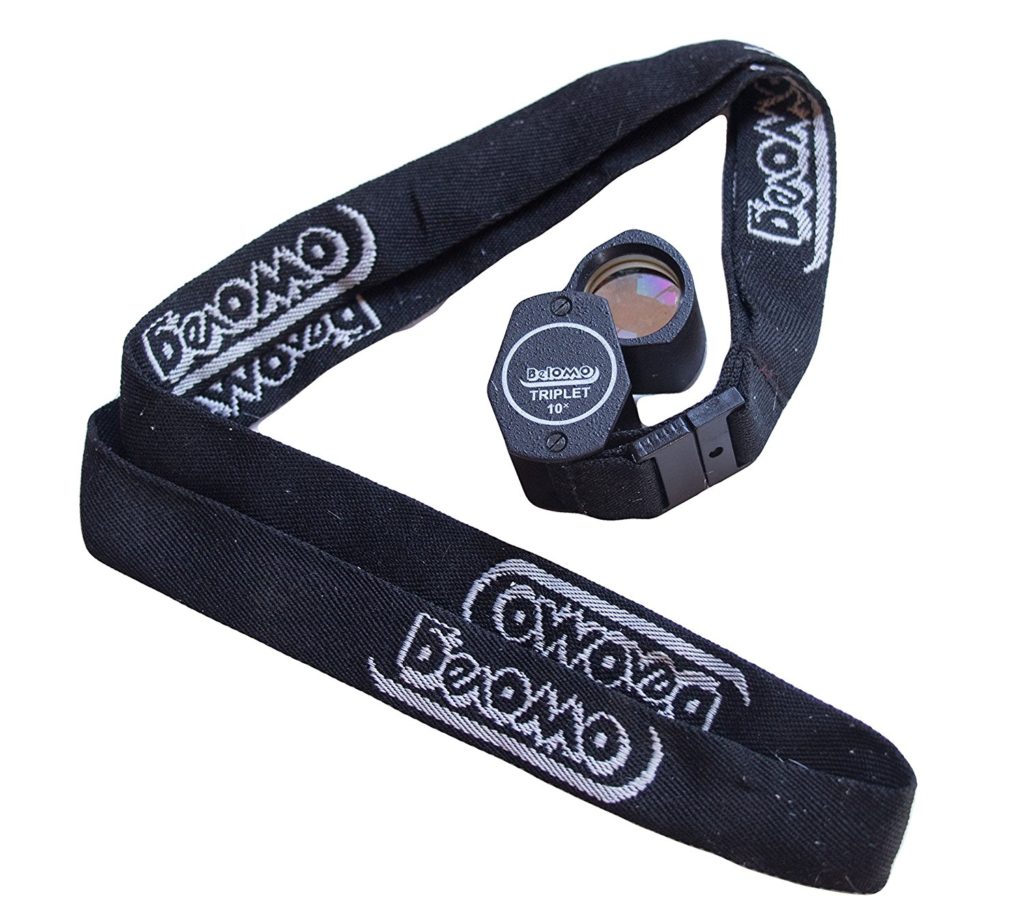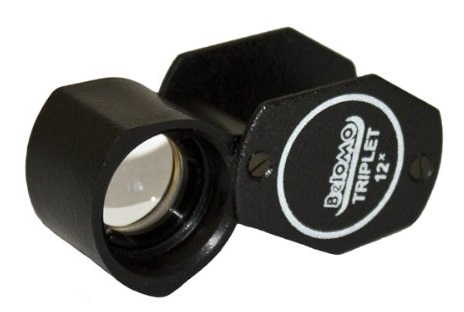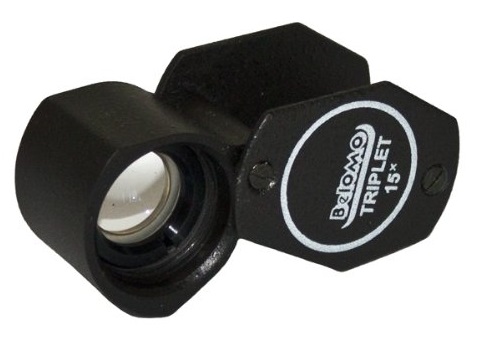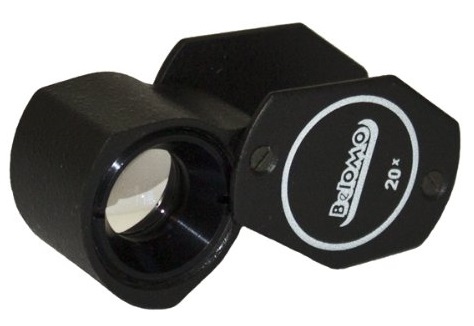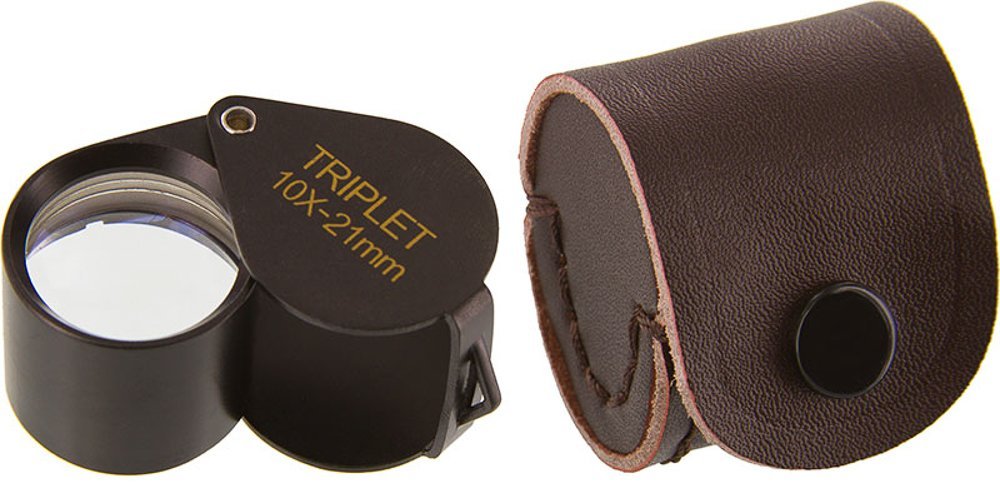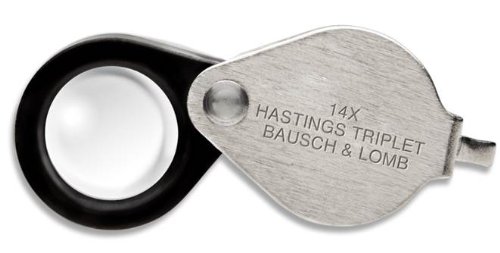Hand Lenses
One of the most basic and essential tools for geologists is the hand lens (also known as a loupe). In fact, geologists use hand lenses so frequently that they tend to wear them on lanyards around their neck so that is it always on hand. Speaking from experience, I can definitely attest to this statement.
Whether you are working in the field, lab, or office, geologists often need to closely examine rocks, minerals, sediments, soils, sands, and other materials for proper identification. With this, a hand lens is the most efficient way to perform this kind of work. By examining a sample at eye level, geologists can properly classify, describe, and characterize rock or material to produce and confirm results.
As a side note, “hand lens” and loupe” are different words used for the same things. Geologist and many other scientists prefer the name “hand lens” while gemologists and other who keep theirs in a case and use them in a lab, store, or office prefer the name “loupe.”
To use a hand lens or loupe, you hold the hand lens up to your eye and then bring the sample close it, only a few centimeters from your face. The point of this is to focus your attention through the lens like you would through an eye or magnifying glass. Following this technique, you will be able to see, at very fine detail, your sample that you want to describe and characterize.
It is very important to know what to look for in a hands lens because there are a variety of different hands lens on the market. First, the X factor after the number refers to how much the lens magnifies the object or sample. For example, if you have a magnifying glass that makes things look 2 or 3 time bigger, then that is 2x or 3x. Geologists typically use 10x, 15x, or 20x hand lenses. The higher the magnification, the closer you can see the trace minerals, tiny crystals, and grain surfaces. 10x is just the right level of magnification to provide the best magnification, depth of field, and light capture. 20x, on the other hand, is good for viewing very, very fine detail such as the edge of a knife or needle (this magnification is not recommended for field work).
Good lensmakers combine 2 or 3 pieces of glass together to correct for chromatic aberration, or what gives an image blurred, color fringes. From this, there are three main types of lenses: triplets, coddington, and folding.
- Triplets, the gold standard, are made of 3 lenses, where every lens refracts (bends) the light passing through the glass. Different wavelengths (color) of light are bent at different amounts and the combination of the 3 lenses results in one lens engineered so that the light coming in is corrected to that the light coming out (making the lens achromatic correct).
- Coddington lenses are made of 2 pieces of glass bonded together and cut to minimize the image and color distortion. They are not achromatic and for this reason there will not be any Coddington lens reviews on this page.
- Folding magnifiers are made of multiple lenses that fold in and out of a housing unit. They are handy for providing simple magnification at multiple levels. The down side is that there are air gaps between each lens, which will refract the wavelengths at different amounts so the resulting image will be distorted and the color you see will not be the same as what you are viewing. These types of lenses are not recommended for the field and will not be discusses on this page.
Don’t be fooled by cheap hand lens or loupes. Many are made of multiple magnifying lenses stacked on top of each other or of a single piece of thick glass. The result is a distorted image and color distortion. Many even sell for nearly the same price or more and don’t even say the manufacturer. Why? Because they come from places which typically cost less. If you don’t know the manufacturer, how can you know the quality? For example, cheap import triplets are just three identical pieces of glass, not bonded, or even a single piece of glass that distort the image and doesn’t provide the stated magnification. It is highly advised that you don’t buy a cheap brand hand lens where you don’t know the manufacturer. You will regret doing this later down the road.
In all, hand lens or loupes allow you to really view samples or mineral crystals up close and personal. This aspect is of utmost importance in being a great field student because you want, and need, to properly identify rocks and minerals so that you can understand their origin and their geologic history. And remember, the hand lens is an investment piece that should last for many years.
AND, before jumping into product reviews, I want to highlight Belarusian Optical and Mechanical Association (BelOMO). This company manufactures telescopes, camera lenses, guided weaponry, and other optical components. They are also highly regarded makers of hand lenses and loupes. They manufacture optical quality lenses, each one inspected and certified just like a camera lens, that stand on their own against the higher priced competition. BelOMO loupes are assembled using screws rather than rivets which allows them to be adjusted. These lenses are sold by authorized US merchants, proving they are the real deal. Don’t let the price fool you, the BelOMO loupe is a FANTASTIC buy and is highly suggested as the hand lens of choice for the field.
BelOMO 10x Triplet Loupe
The BelOMO 10x Triplet Loupe has a viewing area of 0.65 inches (17 millimeters). The large 0.85 inch (21 millimeter) 3-elements lens making up this achromatic triplet gathers lots of light to provide a bright, clear, and color correct view. The 10x power magnification provides the best magnification to depth of field ratio and is the most popular power for a handheld magnifier. The housing and cover are machined metal and coated with matte black finish and assembled using flathead screws.
There is very little distortion seen on the edges of the field of vision and the screws are custom treated so they won’t get loose with usage but can be adjusted to how you like. Overall, this is a highly regarded product. If you need a hand lens, either for field work or for the lab, this is the lens to get!
BelOMO 10x Triplet Loupe with Logo Lanyard
This product is exactly the same as the BelOMO 10x Triplet Loupe from above. The only difference is that this one is equipped with a nylon neck lanyard to help prevent you from losing it. It also has a quick release buckle making it extremely accessible and always at hand.
BelOMO 12x Triplet Loupe
The BelOMO 12x Triplet Loupe has a viewing area of 0.38 inches (9 millimeters). The 3-elements making up this achromatic triplet provide a bright and clear view. The 12x power magnification provides a nice level of magnification and outstanding depth of field. The lens glass isn’t as large or wide as the BelOMO 10x but there’s still lots of light for a very bright view when you need or want just more magnification. The screws are also custom treated so they won’t get loose with usage but can be adjusted to how you like.
BelOMO 15x Triplet Loupe
The BelOMO 15x Triplet Loupe has a viewing area of 0.38 inches (9 millimeters). The 3-elements making up this achromatic triplet provide a bright and clear view. The 15x power magnification provides a nice level of magnification and good depth of field. The lens glass isn’t as large or wide as the BelOMO 10x but there’s still lots of light for a very bright view when you need, or want, more magnification.
Although the 15x does offer a bit more magnification with a good field of view, is it slightly too much for field work. The screws are also custom treated so they won’t get loose with usage but can be adjusted to how you like.
BelOMO 20x Quadruplet Loupe
The BelOMO 20x Quadruplet Loupe has a viewing area of 0.28 inches (7 millimeters). The 4-elements making up this quadruplet provide a bright and clear view while the 20x power magnification provides the strongest magnification recommended in a hand held magnifier. The trade-off is that you’ll find the depth of field very small, which makes this much magnification very difficult to use.
If you are looking for a hand lens to take out in the field, this one is not recommended. To use this hand lens, it needs to be held so close to the eye that they almost touch and the object (or sample) needs to be within half an inch in front of the lens. This in itself is inconvenient and difficult to do. The BelOMO 20x has great magnification but also has an extremely small depth of field and requires a lot of light and because of this, it is recommended to save this lens for desk work only.
SE 10x Triplet Loupe
The SE 10x Triplet Loupe is a decent, reasonably priced hand lens that comes with a snap closure leather case. Overall this is a quality lens that provides a clear image with nearly negligible distortion at the edges. Both the lens and rivets are mounted tight so you don’t have to worry about it becoming disassembled. And as a bonus, you can also attach a keyring to this loupe which provides additional convenience to how this lens is stored and used.
If you are looking for a hand lens with solid reviews that is relatively cheaper, then the SE 10x is a good choice.
Bausch & Lomb 14x Hastings Triplet Magnifier
Another reputable manufacturer is Bausch & Lomb. The Hastings Triplet Magnifiers incorporate three separate lenses, bonded together to form a compound lens to provide sharp, very distinct magnified images without distortion. Bausch & Lomb lenses are also made in the USA.
This hand lens is a smaller compared to the others and is primarily used by jewelers, not outdoorsman. Save this loupe for the desk.
